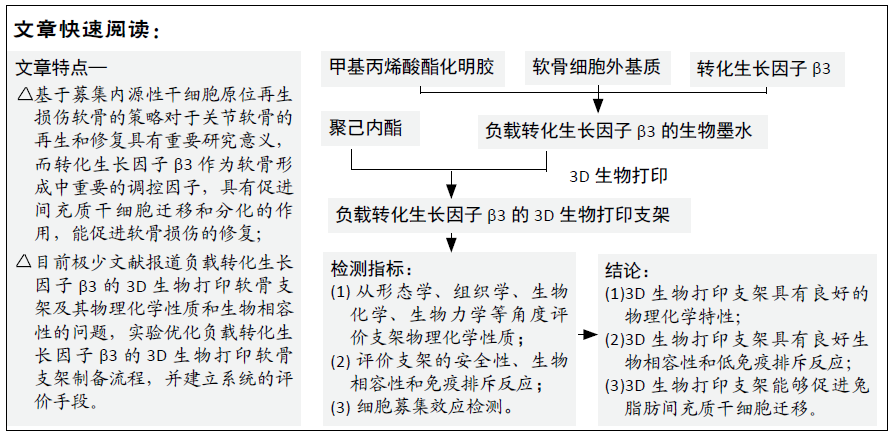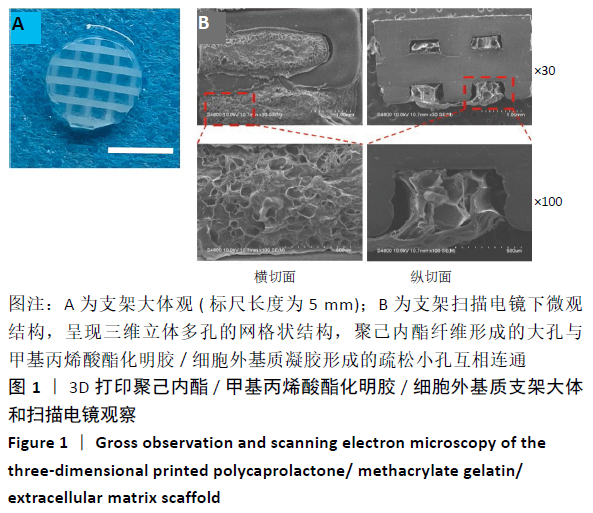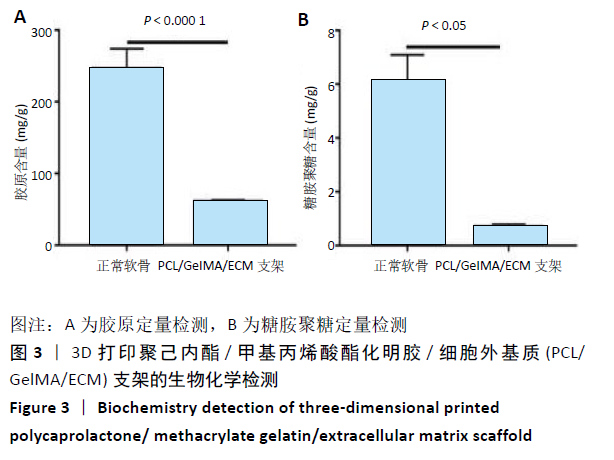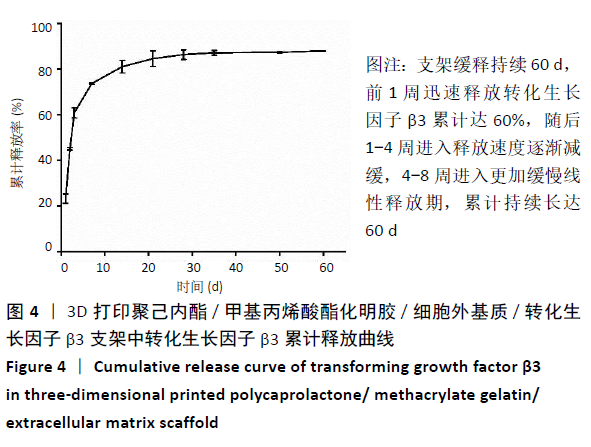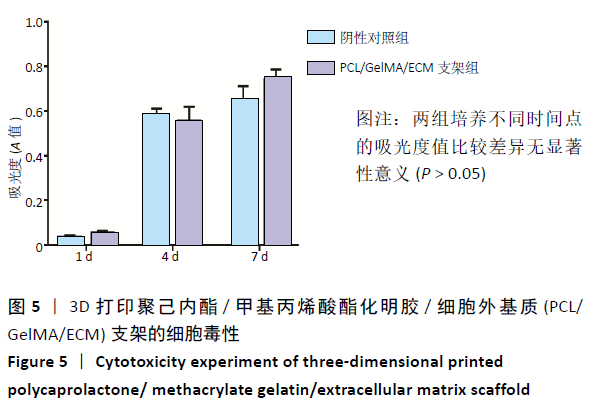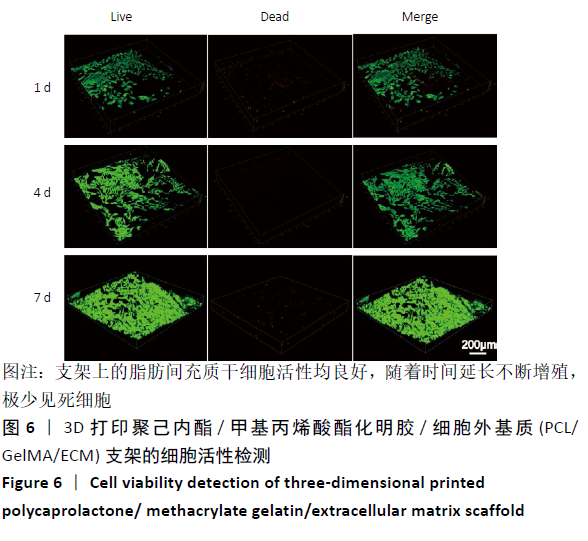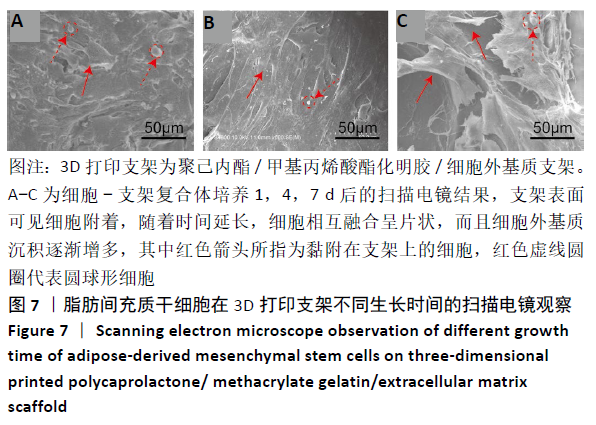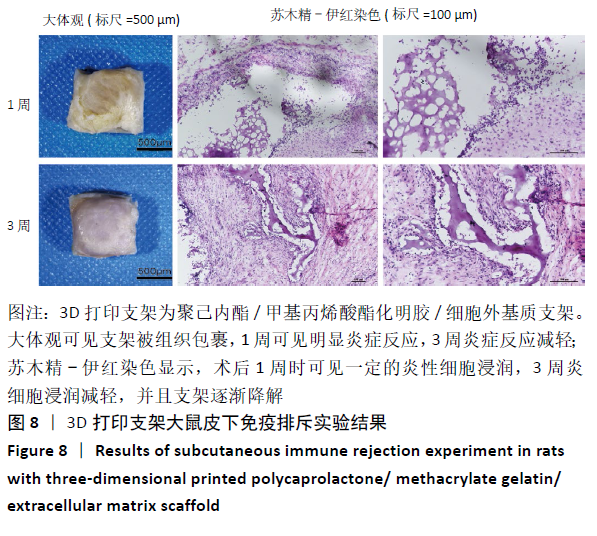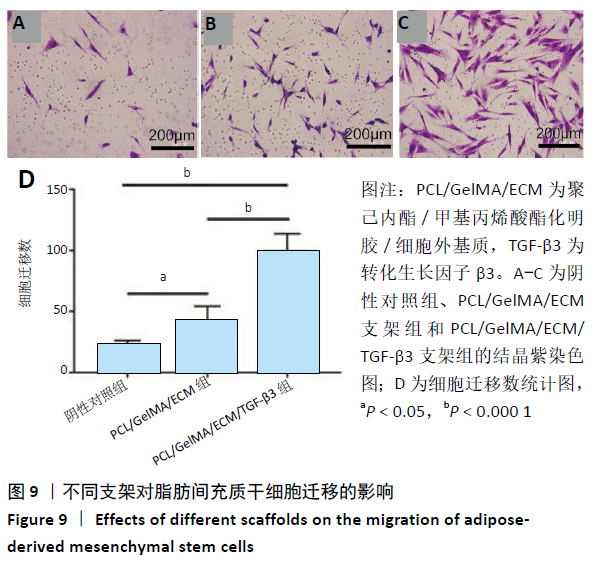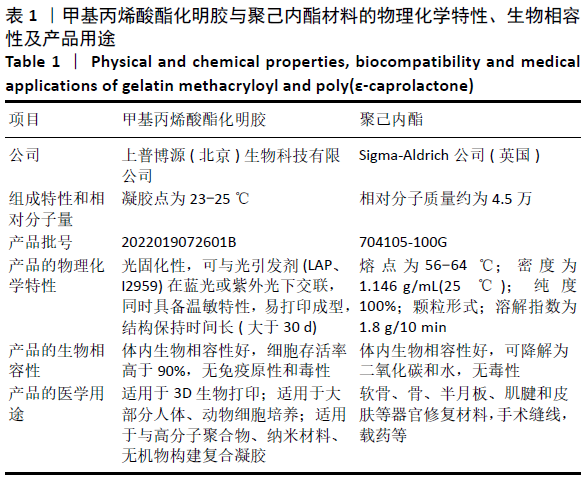[1]SOPHIA FOX AJ, BEDI A, RODEO SA. The basic science of articular cartilage: structure, composition, and function. Sports Health. 2009;1(6):461-468.
[2] CORREA D, LIETMAN SA. Articular cartilage repair: Current needs, methods and research directions. Semin Cell Dev Biol. 2017;62:67-77.
[3] VAN OSCH GJVM, BRITTBERG M, DENNIS JE, et al. Cartilage repair: past and future--lessons for regenerative medicine. J Cell Mol Med. 2009;13(5):792-810.
[4] DORAN PM. Cartilage Tissue Engineering: What Have We Learned in Practice? Methods Mol Biol. 2015;1340:3-21.
[5] CLAVÉ A, POTEL JF, SERVIEN E, et al. Third-generation autologous chondrocyte implantation versus mosaicplasty for knee cartilage injury: 2-year randomized trial. J Orthop Res. 2016;34(4):658-665.
[6] VANDEN BERG-FOELS WS. In Situ Tissue Regeneration: Chemoattractants for Endogenous Stem Cell Recruitment. Tissue Eng Part B Rev. 2014;20(1):28-39.
[7] GRANDE DA, SGAGLIONE NA. Regenerative medicine: Self-directed articular resurfacing: a new paradigm? Nat Rev Rheumatol. 2010;6(12):677-678.
[8] SUN X, YIN H, WANG Y, et al. In Situ Articular Cartilage Regeneration through Endogenous Reparative Cell Homing Using a Functional Bone Marrow-Specific Scaffolding System. ACS Appl Mater Interfaces. 2018;10(45):38715-38728.
[9] YANG Z, LI H, YUAN Z, et al. Endogenous cell recruitment strategy for articular cartilage regeneration. Acta Biomater. 2020;114:31-52.
[10] KO IK, LEE SJ, ATALA A, et al. In situ tissue regeneration through host stem cell recruitment. Exp Mol Med. 2013;45(11):e57.
[11] JING H, GAO B, GAO M, et al. Restoring tracheal defects in a rabbit model with tissue engineered patches based on TGF-beta3-encapsulating electrospun poly(l-lactic acid-co-epsilon-caprolactone)/collagen scaffolds. Artif Cells Nanomed Biotechnol. 2018;46(sup1):985-995.
[12] YANG Q, TENG BH, WANG LN, et al. Silk fibroin/cartilage extracellular matrix scaffolds with sequential delivery of TGF-β3 for chondrogenic differentiation of adipose-derived stem cells. Int J Nanomedicine. 2017;12: 6721-6733.
[13] LEE CH, COOK JL, MENDELSON A, et al. Regeneration of the articular surface of the rabbit synovial joint by cell homing: a proof of concept study. Lancet. 2010;376(9739):440-448.
[14] LI Y, LIU Y, XUN X, et al. Three-Dimensional Porous Scaffolds with Biomimetic Microarchitecture and Bioactivity for Cartilage Tissue Engineering. ACS Appl Mater Interfaces. 2019;11(40):36359-36370.
[15] YANG Q, PENG J, GUO Q, et al. A cartilage ECM-derived 3-D porous acellular matrix scaffold for in vivo cartilage tissue engineering with PKH26-labeled chondrogenic bone marrow-derived mesenchymal stem cells. Biomaterials. 2008;29(15):2378-2387.
[16] KANG H, PENG J, LU S, et al. In vivo cartilage repair using adipose-derived stem cell-loaded decellularized cartilage ECM scaffolds. J Tissue Eng Regen Med. 2014;8(6):442-453.
[17] 周建,田壮,田沁玉,等.不同交联密度甲基丙烯酰酯明胶/脱细胞半月板细胞外基质复合水凝胶的性能[J].中国组织工程研究,2020,24(16): 2493-2499.
[18] XING F, LI L, ZHOU C, et al. Regulation and Directing Stem Cell Fate by Tissue Engineering Functional Microenvironments: Scaffold Physical and Chemical Cues. Stem Cells Int. 2019;2019:2180925.
[19] LUO Y, WEI X, HUANG P. 3D bioprinting of hydrogel-based biomimetic microenvironments. J Biomed Mater Res B Appl Biomater. 2019;107(5): 1695-1705.
[20] LUO Y, LIN X, HUANG P. 3D Bioprinting of Artificial Tissues: Construction of Biomimetic Microstructures. Macromol Biosci. 2018;18(6):e1800034.
[21] CHEN M, FENG Z, GUO W, et al. PCL-MECM Based Hydrogel Hybrid Scaffolds and Meniscal Fibrochondrocytes Promote Whole Meniscus Regeneration in a Rabbit Meniscectomy Model. ACS Appl Mater Interfaces. 2019;41:626-639.
[22] ZHOU C, YANG K, WANG K, et al. Combination of fused deposition modeling and gas foaming technique to fabricated hierarchical macro/microporous polymer scaffolds. Mater Des. 2016;109:415-424.
[23] 张彬,沈师,鲜海,等.3D打印制备PLGA/脱细胞软骨细胞外基质支架材料及其理化特性研究[J].中国修复重建外科杂志,2019,33(8):1011-1018.
[24] 肖统光,郝春香,荆晓光,等.关节软骨细胞外基质/人脐带Wharton胶复合多孔支架的制备及评估[J].中国组织工程研究,2017,21(22):3470-3475.
[25] ALMEIDA HV, ESWARAMOORTHY R, CUNNIFFE GM, et al. Fibrin Hydrogels Functionalized with Particulated Cartilage Extracellular Matrix and Incorporating Freshly Isolated Stromal Cells as an Injectable for Cartilage Regeneration. Acta Biomater. 2016;36:55-62.
[26] CHENG H, ZHANG Y, ZHANG B, et al. Biocompatibility of polypropylene mesh scaffold with adipose-derived stem cells. Exp Ther Med. 2017;13(6):2922-2926.
[27] 韩爽,卢世璧,刘强,等.自体脂肪间充质干细胞复合人脐带Wharton胶支架修复兔膝关节软骨缺损[J]. 中国组织工程研究,2012,16(19):88-93.
[28] SHEPHERD D, SEEDHOM B. The ‘instantaneous’ compressive modulus of human articular cartilage in joints of the lower limb. Rheumatology (Oxford, England). 1999;38(2):124-132.
[29] ANDREAS K, SITTINGER M, RINGE J. Toward in situ tissue engineering: chemokine-guided stem cell recruitment. Trends Biotechnol. 2014;32(9): 483-492.
[30] ZHENG X, YANG F, WANG S, et al. Fabrication and cell affinity of biomimetic structured PLGA/articular cartilage ECM composite scaffold. J Mater Sci Mater Med. 2011;22(3):693-704.
[31] YUE K, TRUJILLO-DE SANTIAGO G, ALVAREZ MM, et al. Synthesis, properties, and biomedical applications of gelatin methacryloyl (GelMA) hydrogels. Biomaterials. 2015;73:254-271.
[32] KLOTZ BJ, GAWLITTA D, ROSENBERG AJWP, et al. Gelatin-Methacryloyl Hydrogels: Towards Biofabrication-Based Tissue Repair. Trends Biotechnol. 2016;34(5):394-407.
[33] VISSCHER D, GLEADALL A, BUSKERMOLEN J, et al. Design and fabrication of a hybrid alginate hydrogel/poly(ε-caprolactone) mold for auricular cartilage reconstruction. J Biomed Mater Res B Appl Biomater. 2019;107(5):1711-1721.
[34] CHEN X, FAN H, DENG X, et al. Scaffold Structural Microenvironmental Cues to Guide Tissue Regeneration in Bone Tissue Applications. Nanomaterials (Basel, Switzerland). 2018;8(11):960.
[35] LUO Z, JIANG L, XU Y, et al. Mechano growth factor (MGF) and transforming growth factor (TGF)-β3 functionalized silk scaffolds enhance articular hyaline cartilage regeneration in rabbit model. Biomaterials. 2015; 52463-52475.
[36] 杨振,李浩,高仓健,等.转化生长因子β3/聚乳酸-羟基乙酸微球对干细胞的调控[J].中国组织工程研究,2020,24(28):4540-4546.
[37] AGRAWAL V, BROWN BN, BEATTIE AJ, et al. Evidence of innervation following extracellular matrix scaffold-mediated remodelling of muscular tissues. J Tissue Eng Regen Med. 2009;3(8):590-600. |
